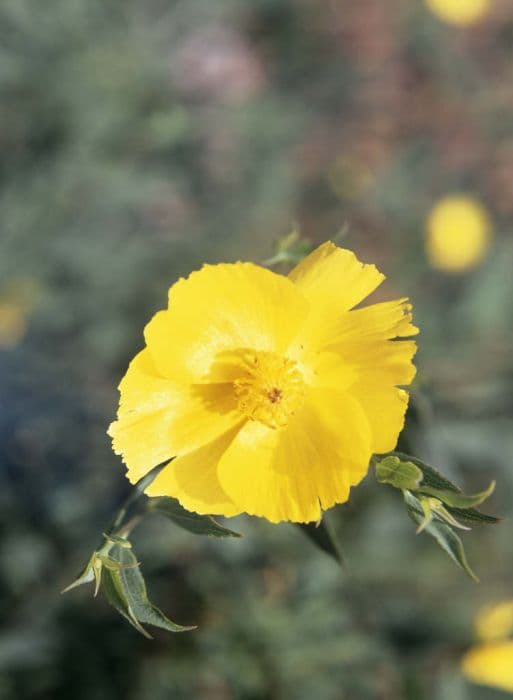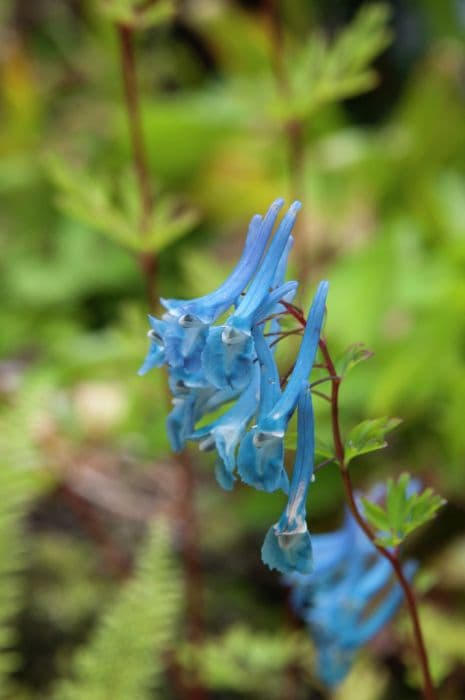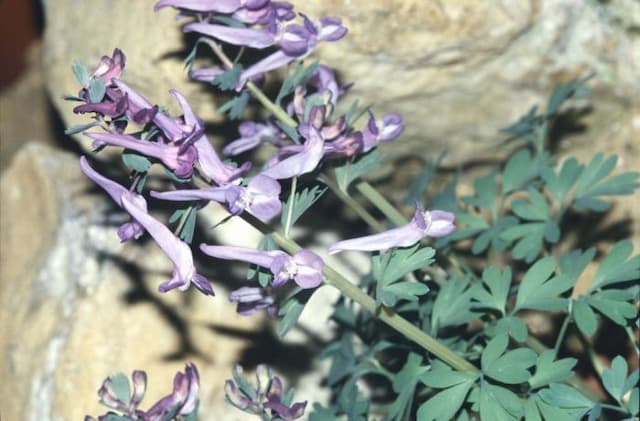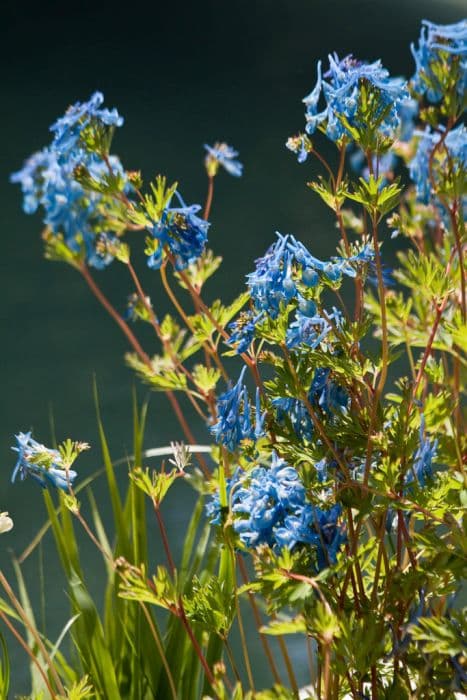Bush poppy Dendromecon rigida

ABOUT
The plant commonly known as bush poppy has a distinctive and appealing appearance. It possesses a woody structure with branches that spread out, providing an open and airy form. The leaves of the bush poppy are narrow and grayish-green, offering an attractive contrast against the landscape. These leaves are typically elongated and have a leathery texture, which adds to the plant's visual interest. The most striking feature of the bush poppy is its flowers. The blooms are large, bright yellow, and poppy-like, with four delicate petals that capture the eye. These flowers emerge from flower buds that are covered in a fine layer of downy hairs. The combination of the bright blossoms against the gray-green foliage creates a stunning display that can catch anyone’s attention. Additionally, the bush poppy bears fruits that are elongated capsules. When mature, these capsules split open, releasing numerous small seeds that allow the plant to propagate. Overall, the bush poppy's appearance is characterized by its woody growth, narrow leaves, vibrant yellow flowers, and elongated fruit capsules, making it a prominent feature in any area where it is present.
About this plant
 Names
NamesSynonyms
Bush Poppy, Tree Poppy, Hardy Bush Poppy, Yellow Bush Poppy
Common names
Dendromecon rigida subsp. rigida.
 Toxicity
ToxicityTo humans
Bush poppy (Dendromecon rigida) is not commonly known to be toxic to humans. However, as with many plants, it is generally advisable to avoid ingesting parts of it due to the potential for allergic reactions or unknown toxicities. There is no widely reported or well-documented case of poisoning in humans from consuming bush poppy, and specific symptoms related to its ingestion appear to be largely undocumented in the scientific literature. As with any plant, if ingestion occurs and adverse effects are noted, medical advice should be sought.
To pets
Bush poppy (Dendromecon rigida) is not commonly known to be toxic to pets either. Like with humans, there is a lack of documented cases of pet poisoning from the ingestion of bush poppy. Toxicity to pets such as dogs and cats appears to be low or undocumented, and there are no well-known symptoms specifically associated with its ingestion by pets. As with any non-food plant, it is prudent to prevent pets from consuming it and to consult a veterinarian if ingestion does occur and any symptoms arise.
 Characteristics
CharacteristicsLife cycle
Perennials
Foliage type
Evergreen
Color of leaves
Green
Flower color
Yellow
Height
6 feet (1.8 meters)
Spread
4 feet (1.2 meters)
Plant type
Shrub
Hardiness zones
7
Native area
California
Benefits
 General Benefits
General Benefits- Landscape aesthetics: Dendromecon rigida, commonly known as bush poppy, has bright yellow flowers that add vibrant color to gardens and landscapes.
- Drought tolerance: Bush poppy is well adapted to dry conditions, making it an excellent choice for water-efficient landscaping.
- Wildlife attraction: The flowers of Dendromecon rigida provide nectar for pollinators such as bees and butterflies, supporting local ecosystems.
- Low maintenance: Once established, bush poppy requires minimal care, making it ideal for low-maintenance gardens.
- Fire resiliency: This plant has the ability to resprout after wildfires, helping to stabilize and recover burned areas.
- Erosion control: The root system of Dendromecon rigida helps to prevent soil erosion, particularly in hilly or sloped areas.
- Natural habitat enhancement: By planting bush poppy, gardeners contribute to the preservation of native plant species and their associated habitats.
 Medical Properties
Medical PropertiesThis plant is not used for medical purposes.
 Air-purifying Qualities
Air-purifying QualitiesThis plant is not specifically known for air purifying qualities.
 Other Uses
Other Uses- Dendromecon rigida, commonly known as bush poppy, can be used as a natural barrier due to its dense growth habit, creating privacy screens or hedge-like structures in gardens.
- The bright yellow flowers of the bush poppy attract a variety of pollinators, including bees and butterflies, which can help pollinate other plants in a garden ecosystem.
- Due to its resilience and adaptability to poor soils, bush poppy can be used for erosion control on slopes and in areas that are challenging for other plants to thrive.
- The long stems of the bush poppy can be used in floral arrangements, particularly by those seeking a drought-resistant plant that adds a splash of color.
- The bush poppy's drought tolerance makes it an ideal choice for xeriscaping, a landscaping method that reduces or eliminates the need for supplemental water from irrigation.
- Landscape designers often use bush poppy to add a pop of color among evergreen plantings, due to its striking yellow flowers contrasting with green foliage.
- Indigenous peoples of areas where bush poppy grows might use its tough branches to construct small items or as part of weaving materials.
- The plant can serve as a teaching tool in educational gardens or botanical gardens, demonstrating California native flora and plant adaptations to fire-prone ecosystems.
- In artistic representations of Californian landscapes, the bush poppy is often depicted to evoke the natural beauty of the region.
- Gardeners may cultivate bush poppy to create a habitat for wildlife, offering shelter and nourishment to local bird species.
Interesting Facts
 Feng Shui
Feng ShuiThe plant Bush poppy is not used in Feng Shui practice.
 Zodiac Sign Compitability
Zodiac Sign CompitabilityThe plant Bush poppy is not used in astrology practice.
 Plant Symbolism
Plant Symbolism- Resilience: The Bush Poppy, as Dendromecon rigida is commonly known, is native to California and can survive in dry, challenging conditions, symbolizing the ability to endure and thrive despite adversity.
- Renewal: Bush Poppy plants are known to regenerate after wildfires, representing the theme of new beginnings and the cycle of rebirth.
- Adaptability: This plant's capacity to adapt to its environment signifies flexibility and the capability to adjust to changing circumstances.
 Water
WaterThe Bush Poppy should be watered moderately, with deep watering methods preferred to encourage a robust root system. In the growing season, typically spring and early summer, watering once every two weeks with 1-2 gallons per plant is usually sufficient. During the dry summer months, you may need to increase watering slightly if the plant shows signs of stress, such as wilting or yellowing leaves. It's important to allow the soil to dry out between waterings, as Bush Poppy is adapted to dry conditions and excessive water can lead to root rot. In its dormant season, fall and winter, reduce watering frequency, providing water only if there are extended dry periods without rainfall.
 Light
LightThe Bush Poppy thrives in full sun conditions, requiring at least six hours of direct sunlight each day to flourish. The ideal spot for this plant is in an open area, away from the shade of larger trees or buildings, where it can receive unfiltered sunlight. While the Bush Poppy is tolerant of partial shade, it may not flower as prolifically, and the growth could become leggy as it stretches towards the light.
 Temperature
TemperatureThe Bush Poppy prefers a temperate climate and is hardy to a range of temperatures. It can tolerate minimum temperatures down to around 20 degrees Fahrenheit but thrives best when the temperature is between 60 and 75 degrees Fahrenheit. Extreme heat or cold beyond these thresholds can stress the plant, though it can survive short bouts of temperatures slightly outside of this range as long as proper care is given.
 Pruning
PruningPruning the Bush Poppy is important for maintaining shape and encouraging dense, vigorous growth. It is best pruned in late winter or early spring before new growth begins. Lightly prune to remove any dead or damaged wood and to shape the plant. Pruning can also stimulate new growth, potentially leading to more flowers during the blooming season. Typically, an annual pruning is sufficient, but you can also deadhead spent flowers during the blooming season to promote further flowering.
 Cleaning
CleaningAs needed
 Soil
SoilBush poppy thrives in well-draining soil with a mix of sand, loam, and decomposed granite. It prefers a slightly alkaline to neutral soil pH, ideally between 6.5 to 7.5. Amend the soil with organic matter to improve drainage and fertility if necessary.
 Repotting
RepottingBush poppies don't typically require frequent repotting and can thrive in the same container for several years. Repot the bush poppy only when it has outgrown its current pot, which is generally every 2-3 years, in the spring or early fall.
 Humidity & Misting
Humidity & MistingBush poppy is native to dry, Mediterranean climates and is best suited to low humidity conditions. It does not require high humidity and will thrive with average ambient humidity found in most home environments.
 Suitable locations
Suitable locationsIndoor
Place in bright, indirect light and maintain low humidity.
Outdoor
Choose sunny spot with good drainage; shelter from harsh winds.
Hardiness zone
7-10 USDA
 Life cycle
Life cycleThe Bush Poppy (Dendromecon rigida) begins its life cycle when a seed germinates, typically in response to fire or disturbance which removes competitive vegetation and exposes the soil to sunlight. The seedling stage follows, with young plants developing roots, stems, and leaves, a process that can be quick given adequate sunlight and drainage. As the plant matures into the vegetative stage, it produces narrow, leathery evergreen leaves and sturdy stems; this drought-adapted shrub can grow rapidly in suitable conditions. Transitioning to the reproductive stage, the Bush Poppy produces bright yellow, poppy-like flowers in the spring, attracting pollinators and subsequently setting seed in elongated capsules. Seeds are dispersed primarily by wind and gravity, and remain dormant in the soil until conditions are favorable for germination, thus completing the cycle. This plant can live several years, with individual specimens known to survive for over twenty years in the right conditions.
 Propogation
PropogationPropogation time
Spring-Early Summer
The most popular method of propagating the Bush Poppy (Dendromecon rigida) is through seed. The optimal time to sow seeds is in the fall, which allows the seeds to undergo a natural stratification process during the cooler winter months, enhancing germination in the spring. Seeds should be sown in well-draining soil and lightly covered with soil, approximately 1/8 inch deep (around 3 millimeters). It's important to keep the soil evenly moist but not waterlogged until germination, which can take several weeks. Following germination, seedlings should be gradually acclimated to outdoor conditions before transplanting to their final location in the garden.









